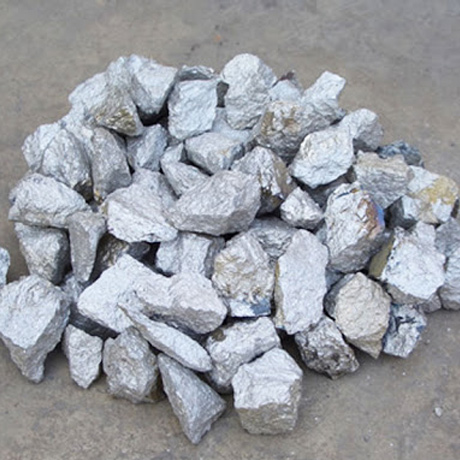Molybdenum
Basic Facts about Molybdenum :
Molybdenum,symbol Mo is a whitish-silvery metal that is highly resistant to corrosion.The name is derived from ancient Greek Molybdos, meaning lead. Earlier It was confused with both lead and graphite and was also utilized as though it was graphite. In the early times molybdenum had no industrial use. It was relatively scarce, the pure metal was difficult to extract, and the necessary techniques of metallurgy were immature.
It is an all-rounder metal due to its chemical and mechanical properties. As it possesses one of the highest melting point, a low co-efficient thermal expansion and a high level of thermal conductivity, makes it a genuine metal in huge demand. It is also a micro nutrient essential for life. It is not found free in nature, it is found only in various oxidation states in minerals, the main ore is Molybdenite and can also be found in Wulfenite or Powellite. It is retrieved as a by-product of tungsten and copper mining too. Molybdenum is the 54th most common element in the Earth's crust. Molybdenum readily forms hard, stable carbides in alloys, and for this reason most of world production of the element is used in steel alloys, including high-strength alloys and superalloys. Most molybdenum compounds have low solubility in water, but when molybdenum-bearing minerals contact oxygen and water, the resulting molybdate ion is quite soluble. Industrially, molybdenum compounds are used in high-pressure and high-temperature applications as pigments and catalysts.It is free from the erosion of the air at room temperature.
It is half the density and atomic weight of Metal Tungsten. Providing the same metallurgical effect with the half quantity it is often replaced to tungsten in steel alloys. Molybdenum is also used in certain nickel based alloys which are highly resistant to corrosion, heat and chemical solutions. Most commercial molybdenum is used in the production of alloys, where it is added to increase hardness, strength, electrical conductivity and resistance to wear and corrosion. Small amounts of molybdenum can be found in a wide variety of products: missiles, engine parts, drills, saw blades, electric heater filaments, lubricant additives, ink for circuit boards and protective coatings in boilers. It is also used as a catalyst in the petroleum industry. Molybdenum is produced and sold as a grey powder, and many of its products are formed by compressing the powder under extremely high pressure.
Another interesting use for molybdenum is its role in scientific research. Molybdenum is very abundant in the ocean today, but was much less in the past. This allows it to serve as an excellent indicator of ancient oceanic chemistry. Scientists in the field of bio geology, for example, study the amount of molybdenum in ancient rocks to help estimate how much oxygen may have been present in the ocean or atmosphere during a certain time.
Uses of Molybdenum :
- It is used to make electrodes of electrically heated glass furnaces.
- It is widely used in the production of core wire, lead wire,hook and other components of spiral filament.
- Electrical filaments are also made from it.
- It is used as the alloying agent in steel. As additive it enhances the strength, toughness, corrosion and wear resistance, weldability and heat resistance of the steel.
- It is used in chemical industries as it forms heat and corrosion resistant when alloyed with nickel.
- It is used in nuclear power industry and to make aircraft parts and missiles.
- It is used as a catalyst in the refining of the petroleum.
- It is used as high temperature lubricants, flame retardants, smoke suppressants and corrosion inhibitors of organic polymer.
- It is used to adhere enamels to metals.
- It provides protective coating to the boilers.
- The molybdenum-based mixed oxides are versatile catalysts in the chemical industry.
- It is mixed with fertilizers also to increase the yield of flowers. It is an essential trace elements for plant growth.
- Proper amount of molybdenum can help in the development of human body. It enhances the storage of oxygen and inhibit tumours in the body.
- It is used as an active ingredient of medicines in form of Ammonium molybdate.
- Mixing the proper ratio of molybdenum additives to the feed can suffice the needs of the animals.
- It is used as semiconductor base plates for power electronics, glass melting electrodes, hot zones for high temperature furnaces and for coating solar cells and flat screens.
MOLYBDENUM ATOMIC DATA
| Atomic number | 42 |
|---|---|
| Melting Point | 2896 K (2623 °C, 4753 °F) |
| Boiling Point | 4912 K (4639 °C, 8382 °F) |
| Density | 10.28 g/cm |
| Heat of Fusion | 37.48 kJ/mol |
| Heat of Vaporization | 598 kJ/mol |
| Molar Heat Capacity | 24.06 J/(mol·K) |
| Atomic Weight | 95.95 |
| Thermal Expansion | 4.8 µm/(m·K) (at 25 °C) |
| Thermal Conductivity | 138 W/(m·K) |
| Thermal Diffusivity | 54.3 mm2/s (at 300 K)[3] |
| Electrical Resistivity | 53.4 nΩ·m (at 20 °C) |
| Magnetic Susceptibility | +89.0·10−6 cm3/mol(298 K) |
| Young Modulus | 329 GPa |
| Shear Modulus | 126 GPa |
| Bulk Modulus | 230 GPaI |
| Poisson Ratio | 0.31 |
| Mohs Hardness | 5.5 |
| Brinell Hardness | 1370–2500 MPa |
| Atomic Radius | 139pm |
